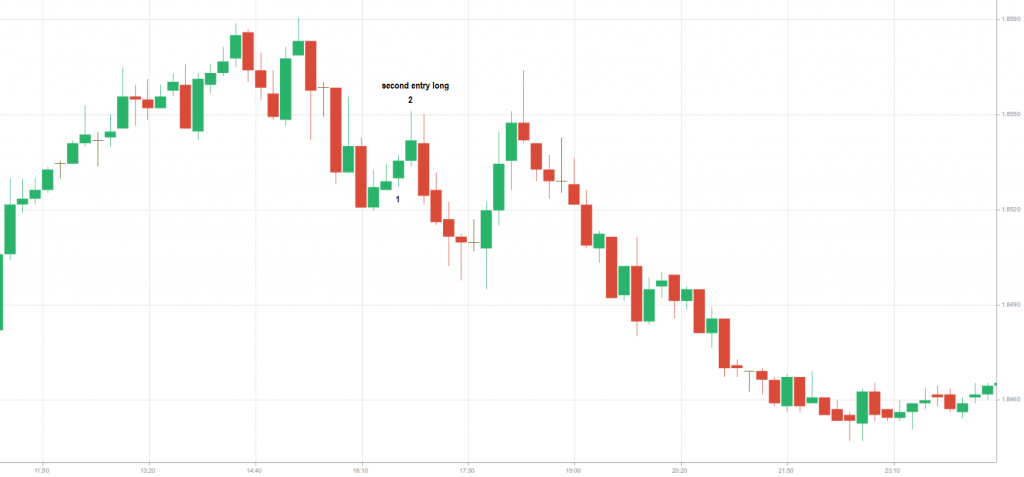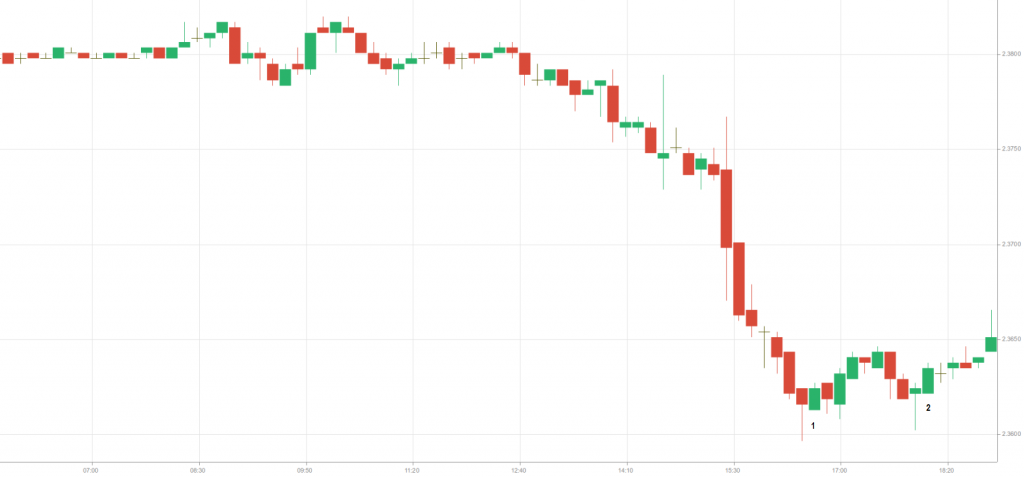Making secondary entries in the market
This lesson will cover the following
- What do we mean by secondary entries?
- Why are they more specific than the first entries?
Very often a peak, that appears on the price chart, requires a second reversal from this peak in order to convince enough market participants, that prices probably began a new bear trend. In fact, the same is also valid for a bottom.
Secondary entries have their specific features
A secondary entry in the market is often considered as more likely to lead to a successful trade than the first entry. A trader, looking to make a secondary entry, is one who enters at a later time, who strives to minimize his/her risk exposure and who usually pays a little bit more for the additional information he/she obtained.
However, in case this secondary entry provides a trader access in the market at a better price than the first entry, there is a chance for the trader to find himself/herself trapped. If the trader pays less for his/her entry in the market, then the market itself might probably be providing a false signal, which may result in a loss. In many cases ”good” secondary entries occur at the same or worse price.
Traders, who look for secondary entries, usually use a more aggressive approach and examine smaller time frames. This means that, for instance, on the 5-minute chart they will enter the market after many other traders have already made their entries. This way second-entry traders actually made a bit worse entry compared to others.
Once again, we should note that if the market is allowing you access at a better price, you probably are missing something and, therefore, you should abstain from entering into this trade.
Another crucial moment to note is when a trader intends to go short on the first reversal, that occurs during a strong uptrend. If this reversal consists of four-five successive bull trend bars or two-three huge bull trend bars, the trader should reconsider whether to enter in a direction against the underlying trend. This is so, because the momentum appears to be quite much. A better decision may turn out to be to wait for the major trend to resume for one-two bars and then enter, as prices attempt to reverse for a second time.
Examples
On the 10-minute chart of GBP/CAD above we can see an example of a secondary entry, which has been at a better price than the first entry. The market allows traders to buy at a few pips better price (bar 2) than others, who went long at bar 1. The entry was good, but the trade itself – obviously unsuccessful. Bar 2 was a second entry, but however, the downward momentum was strong.
In case the market is proposing you a ”bargain”, you would rather not enter into a trade. So, whenever, you consider to enter against the underlying trend, it is better to look for further proof in the prior several bars that the buyers indeed moved more than just a few pips above the preceding bar.
On the 10-minute chart of GBP/BGN above bar 1 formed after seven bars with bear closes, which implied too much downward momentum, thus, a long entry on bar 1 would have been a risky move. Cunning traders would instead wait to see if the bears will be successful in dragging the price to the daily low for a second time. As they failed to do so, a secondary entry may have been made on bar 2.
The same is valid in an opposite situation. If we see a bear bar forming, after seven bars will bull closes (too much upward momentum) our short entry should not be on this first bear bar. We should wait to see whether the bulls will manage to lift the price to the daily high for a second time and if they fail, we should look for a suitable bear bar to make our secondary entry.

